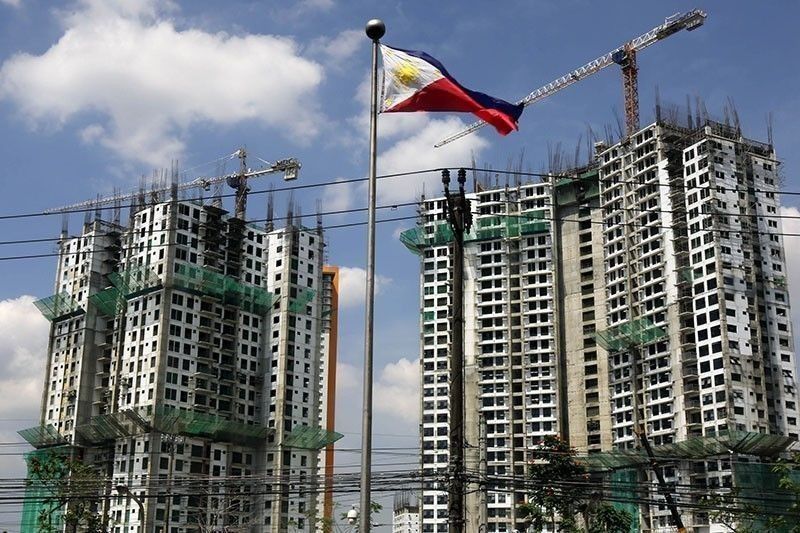Commentary: PPPs eyed for a win-win pandemic recovery

MANILA, Philippines — The coronavirus disease-2019 (COVID-19) pandemic has exposed key vulnerabilities in the Philippines’ infrastructure sector. As we have endeavored to show over the course of this four-part series, public-private partnerships (PPPs) can play a vital role in plugging these gaps and supporting public health and economic recovery by harnessing the capital, expertise, and technology of the private sector.
Finding alternative ways to deliver core infrastructure is especially imperative now as government bodies at both the national and subnational levels tighten their belts to make room for COVID-19 response, relief, and recovery spending. Within the public sector, government-owned and -controlled corporations (GOCCs) and local government units (LGUs) are particularly well-positioned to embark on these partnerships.
Now that we have identified PPPs as a potential solution and players that can be at the forefront of its implementation, the next step is to pinpoint the particular project areas that should be atop our nationwide agenda. How has the pandemic altered the risk profiles of various types of projects, and which ones are ripe for investment?
Key sectoral opportunities
While certain sectors face grim prospects in the face of restricted movement, most notably transport infrastructure (e.g. airports, railways, ports), core services like energy and water are as essential as ever. Meanwhile, the emerging sectors of health and information & communications technology (ICT) are experiencing robust and unprecedented demand. That the government itself is looking to increase its budget allocation for these priority sectors next year is promising and should serve as an invitation to the private sector to follow suit.
Opportunity No. 1: Health infrastructure – As is the case in many other countries, the pandemic has made clear the need for more and better quality healthcare facilities. The Philippines only has 89,000 hospital beds and 1,000 intensive care units for its population of 109 million people, the former being significantly below the World Health Organization (WHO) benchmark of five hospital beds for every 1,000 people.
Opportunity No. 2: ICT and digital infrastructure – Enhanced mobile and broadband access can enable private sector growth, job creation, and information dissemination, which are crucial as many people remain at home, unemployment mounts, and office spaces and education facilities remain shuttered. Further, COVID-19 has demonstrated how the youth’s basic right to education can only be fully realized with quality affordable broadband access. Specific areas that can be pursued include e-commerce which is now emerging as a key driver of the country’s post-Covid consumption growth and would require digital connectivity to leverage its economic impact; fiber build outs in municipalities; and the digitalization of government databases and services. The National ID System which will soon be rolled out is a step in the right direction and demonstrates the possibilities within the e-government space such as contactless digital transactions with government as well as smarter, data-driven and cashless aid and relief distribution.
Opportunity No. 3: Affordable housing – Stay-at-home directives are futile for the thousands of Filipino families that are homeless or living in substandard housing. The dearth of decent housing has made it difficult if not impossible for many to follow social distancing and self-isolation measures. PPPs for socialized housing can contribute to not only addressing these challenges but can likewise help to close the long standing formal and affordable housing gap in the country. As of September 2019, there are 4.5 million homeless people in the Philippines, with about 3 million of them living in Manila.
Opportunity No. 4: Food value chain – The country’s agriculture sector shrunk by 1.2% in the first quarter of 2020 due to provincial travel restrictions, business closures, and disruptions across the logistics chain. Food availability and production sustainability can be enhanced by investments in post-harvest facilities and localized agritech and supply chain solutions.
Opportunity No. 5: Utilities – Before COVID-19 wrought havoc on our country, we were poised to experience a shortfall in power supply due to a supposed peak in energy demand during the summer and the lack of sufficient reserves. While there has actually been a dip in power usage due to the pandemic, we can expect the country to return to its pre-COVID-19 trajectory and for these energy shortfalls to manifest as restrictions are gradually lifted. Within the energy sector, renewable energy projects make for particularly attractive investments as these have priority dispatch to distribution utilities. Other PPP opportunities within the utilities sector include local-level bulk water and wastewater systems.
Moving forward
The ability to attract PPP investment to these various sectors and achieve win-win outcomes boils down to the development of well-structured projects. Apart from strong demand, which underpins revenue potential and the case for which has already been established for the sectors above, what is central to bankable, well-structured PPPs is the appropriate allocation and management of risk. Simply put, responsibility ought to lie with the party that is in the best position to mitigate a certain risk if it arises. The clear and fair delineation of risk responsibilities can minimize the need for contract renegotiations and the likelihood of project failures during unexpected events such as the current pandemic.
Additionally, other measures that can enhance risk management and improve project bankability include the following:
-Contractual adjustment mechanisms;
-relief mechanisms for excusing causes, relief events or emergencies;
-comprehensive insurance schemes;
-better land acquisition risk sharing with the government;
-hybrid of demand and availability based revenue components; and
-risk mitigation products such as guarantees and political risk insurance.
Note that this list is not exhaustive, and enumerates just some of the tools that can be used to strengthen the current PPP environment and pave the way for the faster and wider implementation of PPPs.
PPPs may be complex undertakings, but when done right will be the bayanihan the country sorely needs in a post-pandemic world. They represent the sort of communal unity and cross-sector collaboration that is required as we strive to recover from the pandemic and plan for a better, more resilient future.
This is the final article of a four-part series on the increasing importance of public-private partnerships in supporting the government’s infrastructure agenda amid the COVID-19 pandemic.
Abigail Tan is a Director at Polestrom and concurrently serves as a managing partner at ARQCapital Partners Inc., a private market platform that serves Philippines SMEs. Raya Buensuceso is an analyst at Polestrom. She was formerly a research fellow at the Asia Center of the Milken Institute, a US-based economic and policy think tank.
Polestrom provides advisory services for infrastructure projects in the Philippines and emerging markets.
- Latest
- Trending


































